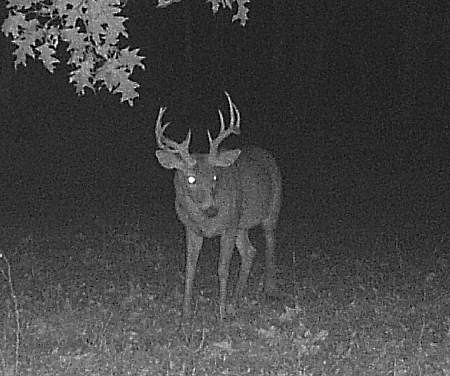|
ARTICLE: THE MENACE OF MOSQUITOES by Maggie Burns
Mosquitoes cause major disruptions to warm weather backwoods adventures. These pesky little insects not only create a nuisance with their irritating bite, but, in addition, are responsible for the transmission of certain serious diseases such as dengue, malaria, yellow fever and various forms of encephalitis including the West Nile virus. Not only can mosquitoes carry diseases which afflict humans, but they also can transmit several diseases and parasites that dogs and horses are very susceptible to. These include dog heart worms and eastern equine encephalitis. Each year, according to the World Health Organization, some 500 million people are infected with mosquito-borne illnesses. More than 2.5 million die, many of them young children. Deaths in the U.S., though, are still rare.
The mosquito goes through four separate and distinct stages of its life cycle: egg, larva, pupa and adult.
Female mosquitoes lay their eggs on the surface of fresh or stagnant water. The water may be in tin cans, barrels, horse troughs, ornamental ponds, swimming pools, puddles, creeks, ditches or marshy areas. Mosquitoes prefer water sheltered from the wind by grass and weeds. Tiny mosquito larvae emerge from the eggs within 24 – 48 hours.
Mosquito larvae, commonly called “wigglers’, must live in water from 7 to 14 days depending on water temperature. Larvae must come to the surface at frequent intervals to obtain oxygen through a breathing tube called a siphon. They eat algae and small organisms which live in the water. During growth, the larva molts (sheds its skin) four times. At last the molting a pupa emerges.
Mosquito pupae, commonly called “tumblers”, must live in water from 1 to 4 days, depending upon species and temperature. The pupa is lighter than water and therefore floats at the surface. It takes oxygen through two breathing tubes called “trumpets”. When it is disturbed it dives in a jerking, tumbling motion and then floats back to surface. The pupa does not eat but concentrates all its energies on its metamorphosis into an adult. The adult mosquito splits the pupal case and emerges to the surface of the water where it rests until its body can dry and harden.
Typically, male mosquitoes emerge first and wait nearby for the females to emerge. After the females emerge, they will mate with several males over the course of 2 to 3 days. This brief mating period is all that is required for the life of the female.
About one week after emerging from the pupa, the adult females begin searching for a suitable host. Female mosquitoes are attracted to a potential host through a combination of different stimuli that emanate from the host. The stimuli can include carbon dioxide, body odors, air movement or heat.
Upon locating a suitable host, the female will probe the skin for a blood capillary then inject a small amount of saliva containing chemicals which prevent the host’s blood from clotting. This is often the pathway for potential pathogens such as viruses to enter the host. From this blood meal, the female is able to extract all the proteins and other nutrients required to produce 100 to 300 eggs. After she feeds on a host, she will find a cool resting spot for several days while she converts this blood meal into eggs.
Mosquitoes usually feed on nectar from flowers and fruit juices. Only the female requires the blood meal for egg production about every 1 to 2 weeks throughout her life. The average life span of the female mosquito is 3 to 100 days; the male’s is 10 to 20 days. Depending on species, the female mosquitoes may lay 100 to 300 eggs at a time and may average 1,000 to 3,000 during their lifespan.
In some species, females which emerge in late summer search for sheltered areas where they “hibernate” until spring. Warm weather brings them out again in search of water on which to lay their eggs.
Health risks are two-fold. The mosquito bite itself poses the first problem. Typical symptoms include swelling, redness and irritation at the puncture site. Sensitivity to mosquito bites varies with individuals, most people have only a mild reaction but others can have severe symptoms from the saliva of mosquitoes. If the bites are scratched or traumatized, they may also become infected with bacteria and secondary infection, like cellulitis, can develop. Make sure to keep all bites clean with soap and water. Apply topical creams for itch relief like hydrocortisone or diphenhydramine. Antibiotic ointments can help reduce the chance of infection and promote healing.
The second risk concerns exposure to certain diseases. Only a small percentage of mosquitoes are infected. And just because we get bit by an infected mosquito doesn’t mean we will become seriously ill from the disease it carries. Our bodies successfully battle germs and microscopic invaders every day. You can help your immune system stay healthy by eating a well-balanced diet and getting adequate rest. If you become ill with high fevers, confusion, weakness or any other severe health problems call your doctor or visit the clinic. Whether your illness is mosquito related or not, it will benefit from early treatment.
Your degree of mosquito exposure will depend on what type of backwoods adventure you’re on. Here are some tips to help you reduce your risk.
* Wear clothes that cover as much of your body as possible i.e.: long-sleeved shirts, long pants, socks covering the ankles, etc.
* Use insect repellents in cream, lotion or spray form on uncovered body parts. The composition of the medium determines how long it is effective: For example, creams have a longer-lasting effect than sprays. Common active substances such as ethereal oils, N,N-Diethyl-m-Toluamide (DEET) or Dimethylophthatale are very effective. The area of skin to be protected should be covered evenly, because mosquitoes will find and bite the untreated spots. It is often helpful to use spray repellents on outer clothing as well as the skin. The use of permethrin on your clothes not only repels mosquitoes but chiggers and ticks. It can be used on your tents, camp chairs and about any kind of fabric but not on your skin. Remember to read the directions on any repellent you use.
* Use insecticides in form of aerosols, vaporizers, candles, smoke spirals or others living and, most of all, in sleeping areas. Insecticides may also be used in the low foliage around your campsite to provide additional protection. Again follow the directions on the product label.
* Remain in protected mosquito-protected rooms after twilight and at night i.e.: in rooms with air-conditioning or mosquito nets attached to windows and doors.
* Select campsites at a distance from stale waters, ditches and water barrels.
You can also reduce the number of mosquitoes in your area by eliminating breeding and resting areas.
* Empty standing water in old tires, cemetery urns, buckets, plastic covers, toys or any other container where “wrigglers” and “tumblers” live.
* Empty and change the water in bird baths, fountains, wading pools, rain barrels and potted plant trays at least once a week if not more often.
* Drain or fill temporary pools with dirt.
* Keep swimming pools treated and circulating and rain gutters unclogged.
* Adult mosquitoes prefer to rest on weeds and other vegetation. Homeowners can reduce the number of areas where adult mosquitoes can find shelter by cutting down weeds adjacent to the house foundation and in their yards and mowing the lawn regularly.
Don’t let mosquitoes take the fun out of your next backwoods adventure. Use what you’ve learned to take precautions and minimize your risks. Remember to pack sufficient repellents and insecticides and use them as directed. Until next time…Maggie B.
~~~~~~~~~~~~~~~~~~~~
|

